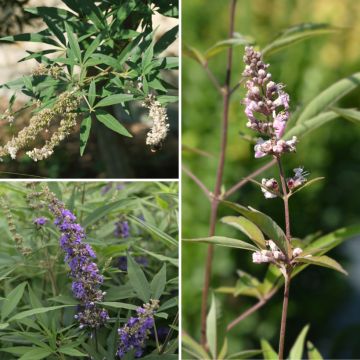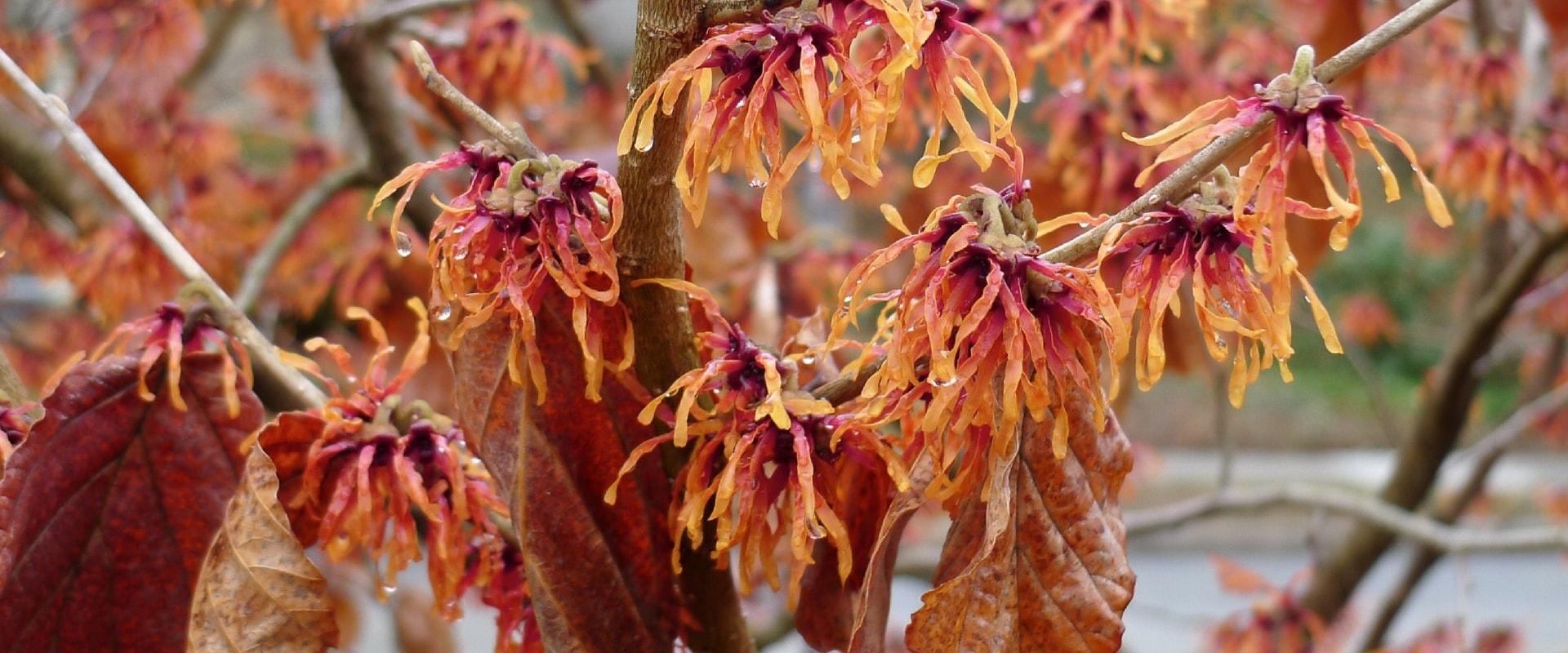

Lindera obtusiloba - Oriental Spicebush


Lindera obtusiloba - Oriental Spicebush


Lindera obtusiloba - Oriental Spicebush
Lindera obtusiloba - Oriental Spicebush
Lindera obtusiloba
Oriental Spicebush
Special offer!
Receive a €20 voucher for any order over €90 (excluding delivery costs, credit notes, and plastic-free options)!
1- Add your favorite plants to your cart.
2- Once you have reached €90, confirm your order (you can even choose the delivery date!).
3- As soon as your order is shipped, you will receive an email containing your voucher code, valid for 3 months (90 days).
Your voucher is unique and can only be used once, for any order with a minimum value of €20, excluding delivery costs.
Can be combined with other current offers, non-divisible and non-refundable.
Why not try an alternative variety in stock?
View all →This plant carries a 24 months recovery warranty
More information
We guarantee the quality of our plants for a full growing cycle, and will replace at our expense any plant that fails to recover under normal climatic and planting conditions.
Would this plant suit my garden?
Set up your Plantfit profile →
Description
Lindera obtusiloba is a small deciduous tree or large Asian bush related to bay laurel and camphor tree. It is interesting for its lush foliage, which is aromatic when crushed and turns beautiful shades of yellow in autumn. Its yellow flowering is small but early and pleasantly scented. This beautiful shrub is hardy, but it only thrives in non-calcareous, humus-rich, well-drained soils that do not dry out too much in summer. If you can provide these growing conditions, it will become a beautiful specimen to place in isolation or at the back of a bed.
Lindera obtusiloba belongs to the Lauraceae family. It is a botanical species native to wooded and mountainous regions of Asia, especially Korea, Japan, and China. It is a small tree or large bush reaching 3 to 6 m in all directions, with a rounded and spreading crown. Its habit is dense and bushy, spreading with age. The leaves of Lindera obtusiloba are arranged alternately on the branches and measure between 5 to 15 cm in length. When they first appear, they are tinted with dark purple. These are large leaves, often divided into 3 pointed lobes at their tips, with slightly toothed or entire edges. The upper side of the leaf is deep green and smooth, while the underside is lighter and may have a slightly fuzzy texture. The intensity of the autumn colours will depend on the climate and soil. Most often, the leaves display a beautiful range of yellow hues. Under particularly favourable conditions, they can also take on orange or even scarlet red tones. Flowering takes place between February and March, before the leaves appear. The flowers are small, bright yellow, grouped in simple or compound umbels. As Lindera obtusiloba is a monoecious species, each individual carries distinct male and female flowers. The male flowers contain several prominent stamens, while the female flowers are centred around a small ovary. Each flower, measuring 1 to 2 cm in diameter, consists of 3 small open yellow petals. These fragrant flowers attract pollinators. After pollination, the female flowers are followed by small black drupes that ripen in late summer or early autumn. Although small, these fruits are an important source of food for local wildlife, particularly birds. Fruit production will be enhanced if two different individuals are present in the garden.
Lindera obtusiloba finds its place in the garden of an enthusiast for rare Asian shrubs, in favourable climate and soil conditions. It is an ornamental species and useful for the small fauna of the garden. It can be used in a large shrub bed or within a large informal hedge. It heralds the return of spring and participates in the grand autumn celebration with deciduous euonymus, certain viburnums (Viburnum odoratissimum, Viburnum sargentii Onondaga'), small maples (Acer ginnala Bailey Compact ®, Acer AMPLE SURPRISE), rowans (Sorbus randaiensis), etc.
Properties: Lindera obtusiloba is known in traditional Asian medicine, particularly in China, Korea, and Japan, for its medicinal properties.
Plant habit
Flowering
Foliage
Botanical data
Lindera
obtusiloba
Lauraceae
Oriental Spicebush
Lindera cercidifolia, Lindera obtusiloba f. velutina, Lindera obtusiloba f. ovata, Benzoin obtusilobum
Southeast Asia
Other Shrubs A to Z
View all →Planting and care
Plant Lindera obtusiloba in a semi-shaded position, sheltered from the scorching rays of the sun. This bush requires a non-calcareous soil, rich in humus, well-worked, and remaining moist in summer. When planting, mix the garden soil (non-calcareous) with fertiliser-enriched compost. Water generously to help the plant establish. Monitor watering during the first two or three years and in dry summers. Like many aromatic plants, this small tree is less susceptible to diseases and pests. It is hardy and can withstand temperatures below -15°C.
Planting period
Intended location
Care
Planting & care advice
This item has not been reviewed yet - be the first to leave a review about it.
Similar products
Haven't found what you were looking for?
Hardiness is the lowest winter temperature a plant can endure without suffering serious damage or even dying. However, hardiness is affected by location (a sheltered area, such as a patio), protection (winter cover) and soil type (hardiness is improved by well-drained soil).

Photo Sharing Terms & Conditions
In order to encourage gardeners to interact and share their experiences, Promesse de fleurs offers various media enabling content to be uploaded onto its Site - in particular via the ‘Photo sharing’ module.
The User agrees to refrain from:
- Posting any content that is illegal, prejudicial, insulting, racist, inciteful to hatred, revisionist, contrary to public decency, that infringes on privacy or on the privacy rights of third parties, in particular the publicity rights of persons and goods, intellectual property rights, or the right to privacy.
- Submitting content on behalf of a third party;
- Impersonate the identity of a third party and/or publish any personal information about a third party;
In general, the User undertakes to refrain from any unethical behaviour.
All Content (in particular text, comments, files, images, photos, videos, creative works, etc.), which may be subject to property or intellectual property rights, image or other private rights, shall remain the property of the User, subject to the limited rights granted by the terms of the licence granted by Promesse de fleurs as stated below. Users are at liberty to publish or not to publish such Content on the Site, notably via the ‘Photo Sharing’ facility, and accept that this Content shall be made public and freely accessible, notably on the Internet.
Users further acknowledge, undertake to have ,and guarantee that they hold all necessary rights and permissions to publish such material on the Site, in particular with regard to the legislation in force pertaining to any privacy, property, intellectual property, image, or contractual rights, or rights of any other nature. By publishing such Content on the Site, Users acknowledge accepting full liability as publishers of the Content within the meaning of the law, and grant Promesse de fleurs, free of charge, an inclusive, worldwide licence for the said Content for the entire duration of its publication, including all reproduction, representation, up/downloading, displaying, performing, transmission, and storage rights.
Users also grant permission for their name to be linked to the Content and accept that this link may not always be made available.
By engaging in posting material, Users consent to their Content becoming automatically accessible on the Internet, in particular on other sites and/or blogs and/or web pages of the Promesse de fleurs site, including in particular social pages and the Promesse de fleurs catalogue.
Users may secure the removal of entrusted content free of charge by issuing a simple request via our contact form.
The flowering period indicated on our website applies to countries and regions located in USDA zone 8 (France, the United Kingdom, Ireland, the Netherlands, etc.)
It will vary according to where you live:
- In zones 9 to 10 (Italy, Spain, Greece, etc.), flowering will occur about 2 to 4 weeks earlier.
- In zones 6 to 7 (Germany, Poland, Slovenia, and lower mountainous regions), flowering will be delayed by 2 to 3 weeks.
- In zone 5 (Central Europe, Scandinavia), blooming will be delayed by 3 to 5 weeks.
In temperate climates, pruning of spring-flowering shrubs (forsythia, spireas, etc.) should be done just after flowering.
Pruning of summer-flowering shrubs (Indian Lilac, Perovskia, etc.) can be done in winter or spring.
In cold regions as well as with frost-sensitive plants, avoid pruning too early when severe frosts may still occur.
The planting period indicated on our website applies to countries and regions located in USDA zone 8 (France, United Kingdom, Ireland, Netherlands).
It will vary according to where you live:
- In Mediterranean zones (Marseille, Madrid, Milan, etc.), autumn and winter are the best planting periods.
- In continental zones (Strasbourg, Munich, Vienna, etc.), delay planting by 2 to 3 weeks in spring and bring it forward by 2 to 4 weeks in autumn.
- In mountainous regions (the Alps, Pyrenees, Carpathians, etc.), it is best to plant in late spring (May-June) or late summer (August-September).
The harvesting period indicated on our website applies to countries and regions in USDA zone 8 (France, England, Ireland, the Netherlands).
In colder areas (Scandinavia, Poland, Austria...) fruit and vegetable harvests are likely to be delayed by 3-4 weeks.
In warmer areas (Italy, Spain, Greece, etc.), harvesting will probably take place earlier, depending on weather conditions.
The sowing periods indicated on our website apply to countries and regions within USDA Zone 8 (France, UK, Ireland, Netherlands).
In colder areas (Scandinavia, Poland, Austria...), delay any outdoor sowing by 3-4 weeks, or sow under glass.
In warmer climes (Italy, Spain, Greece, etc.), bring outdoor sowing forward by a few weeks.




































































